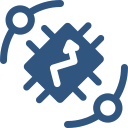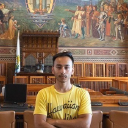Thingsboard
ThingsBoard

Figure: Logo of the ThingsBoard project
ThingsBoard is an open-source platform for data collection, processing, and visualization. The platform enables rapid development, management, and scaling of IoT projects. Providing an out-of-the-box IoT cloud solution the service ensures an efficient infrastructure for IoT applications.
ThingsBoard is able to:
- Define relations between devices, assets, and customers.
- Collect, visualize, and process data from IoT devices.
- Analyze incoming telemetry and trigger complex event processing.
- Remotely control IoT devices.
- Establish the workflow based on device life-cycle functionalities.
- Build responsive and dynamic dashboards for data visualization.
- Enable use-case specific customizable feature.
- And much more…
Authors

I'm a highly motivated student MSc Aerospace Engineering Control and Simulation with a passion for aviation.

I’m just a student, standing in front of the world, enthusiastic about technology, eager to learn more!

I'm a MSc Computer Science student following the specialization track 'Artificial Intelligence', with a special interest in artificial learning.
ThingsBoard - Architecture
From Vision to Architecture Previously, we introduced ThingsBoard1, an open source IoT platform on which you can read out and interact with all your IoT devices. We did this by describing its goals and the context in which it operates2. In this post, we will talk more about ThingsBoard’s underlying system architecture.
The ThingsBoard application is built following a layered, service-oriented architecture, according to the standards for Java EE applications3
Thingsboard
March 15, 2021
ThingsBoard - Distribution Analysis
ThingsBoard - Distribution Analysis After providing and gaining much deeper insight into ThingsBoard’s IoT platform and architecture1, we now present a deeper analysis of ThingsBoard’s most exciting aspect: the distribution architecture.
Distributed Components To recap, ThingsBoard consists of six main distributed components which are, (IoT) devices, ThingsBoard Transport microservices, Thingsboard Core microservices, ThingsBoard Rule Engine microservices, ThingsBoard Web UI and Third-Party systems.
Figure: ThingsBoard Architecture Devices represent the range of various types of IoT devices which can be connected to ThingsBoard such as, thermostats, sensors, gps trackers, etc.
Thingsboard
March 29, 2021
ThingsBoard - Quality
Quality and Evolution After an elaborate evaluation of ThingsBoard’s vision and the application’s architecture, we hereby present a review of different quality and maintainability aspects of the ThingsBoard open source system.
Software Quality Processes Thingsboard’s code base contains some tests for the backend code, but does not contain any useful end-to-end tests. In total, the last succeeding CI build on the master branch contains 603 tests, covering 75% of the classes, 44.
Thingsboard
March 22, 2021
ThingsBoard - Product Vision
Introduction After a long day of work, you’re getting back home. As soon as you step outside, you shiver from the cold. Luckily, you have an internet-connected thermostat, which you can turn on before you arrive, making your house nice and warm.
A few weeks later you are on holiday. After you have finally found your seat on the plane, you start to get a little anxious. Did you turn the lighting off back home?
Thingsboard
March 5, 2021

